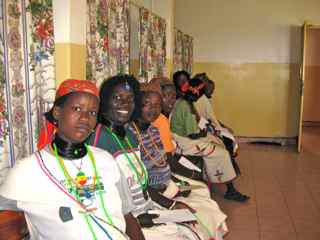Monitoring maternal and neonatal deaths
We aim to set up a simple, cost-effective, and sustainable tool to monitor maternal and newborn deaths in a remote part of south-west Ethiopia. We shall set up a community-based birth and death registry using health extension workers.
Data from this research will help us to monitor the intervention programme to reduce maternal and neonatal deaths. The registry is a model for Ethiopia, and may also help other countries to set up birth registries.
We shall use, and compare several designs such as population based registries, direct demographic models (surveys) and institutional registries to measure maternal and neonatal mortality.
The research is collaboration between Ministry of Health in Ethiopia, Arba Minch Hospital, Gidole Hospital, Arba Minch University and University of Bergen.
Developing training programmes for health officers
Through the programme to reduce maternal and neonatal mortality we train non-clinician physicians (health officers) to carry out comprehensive emergency obstetric care. We regularly evaluate the outcomes of the operations they do.
On a separate web page we have outlined
- The curriculum for training health officers in emergency obstetrics and surgery
- Operations done during training period
- Regular review of outcomes of operations in emergency obstetrics
Later, we shall also write about our experiences in setting up emergency obstetric services, at health centres and small rural hospitals. This will also outline the equipment needed to carry out such work.


 There are unfortunately many hospitals in Ethiopia and in Africa that do not work as expected. They lack staff, or equipment. Often they lack staff doing essential interventions such as caesarean sections.
There are unfortunately many hospitals in Ethiopia and in Africa that do not work as expected. They lack staff, or equipment. Often they lack staff doing essential interventions such as caesarean sections.